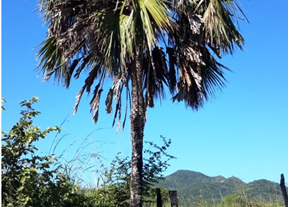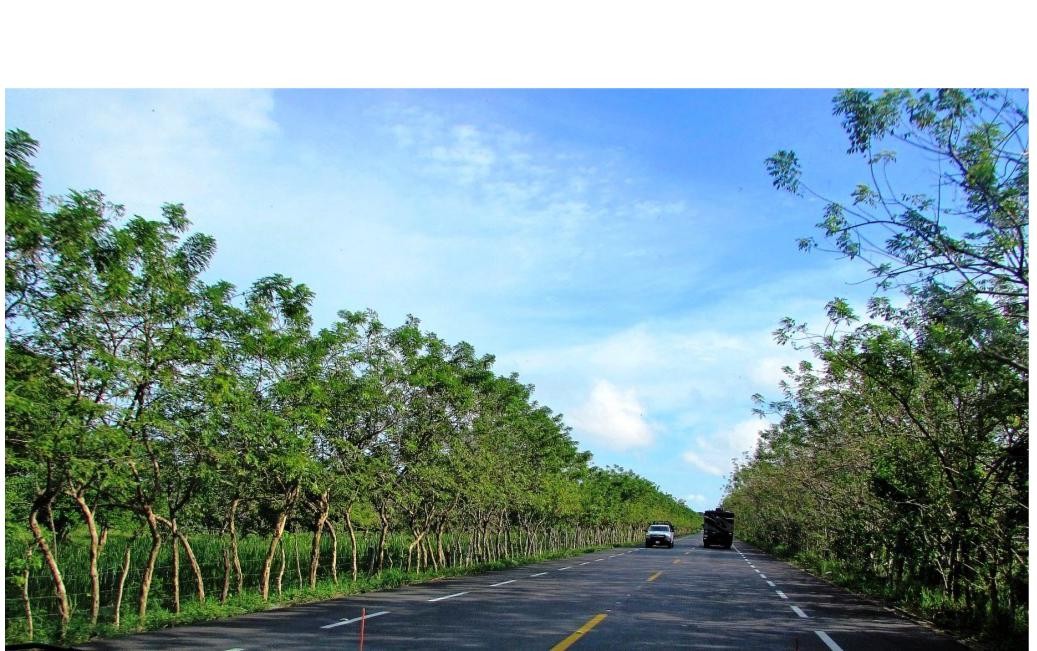By John Chalmers on the June 2020 Edition
Cataviña is a small town on Highway 1, in the middle of the peninsula, on a high desert plateau, at 1800 ft., and is a popular stop for our tours and for many other Baja travelers. It is located in the state of Baja California, 118 km (74 mi) south of El Rosario, and 106 km (66 mi) north of the junction to Bahía de los Ángeles. The local economy is dependent on tourism, ranching (Rancho Santa Inés or Ynez), on the outskirts of the town, is an ejido held in common by the residents, and a cou-ple of private vendors selling gasoline from 55-gallon barrels.
Cataviña has a first-rate hotel (Hotel Mision Cataviña), first developed as a chain of La Pinta Hotels across Baja following the completion of highway 1 in 1973. This was part of an initiative of the National Fund for the Promotion of Tourism (FONATUR) by the Mexican government. Next to the hotel is an old government RV park, also developed in 1973, long since operation-al (power, water, amenities), only the dump stations work. Nearby are cave paintings, thousands of acres of boulders a far as the eye can see, mixed with stunning desert vegetation such as boojums (cirios) and cardon cactus, all of which makes the area a popular place for lovers of ecotourism.
For years, the Cataviña Pemex gas station was the only place to fuel up between El Rosario (north) and Guerrero Negro (south), a significant gas gap. Often when the fuel tanks were empty, long lines formed awaiting fuel. That gas station closed years ago but you can still get gas from a couple of private vendors and their 55-gallon barrels, but it can be pricy. In the last couple of years, a Dos Pinos Mercado, including fuel pumps, has reoccupied the former gas station. Our February 2020 tour not-ed the market was open but the pumps were not yet opera-tional. Our tours have dry camped at Rancho Santa Inés and there is also an option to day camp at Parque Natural Deseierto Central Trailer Park which is behind the hotel.
Rancho Santa Inés
A stay at Santa Inés comes with the opportunity to eat at the Cantina and meet Oscar and his family that now operate this ranch. If you are RVing, you will likely also meet Ralph, a fixture at Santa Inés, who arrives twice a day on his Honda 3-wheeler ATV. Ralph and his wife winter here in a house built into the mountain behind the ranch. Ralph has resided here for decades, first arriving by plane from New Mexico on the 3900’ X 100’ runway sitting just above the ranch that is still in use to-day. Ralph has helped many RVers and is always eager to get his tools out. He is now in his mid-eighties and drives down each season. If you get a chance, make sure you say hello. He has stories that go back years and will be missed when that day comes. Star gazing is nothing less than spectacular in clear night skies and, at 1800’, you can often wake up to frost and ice.
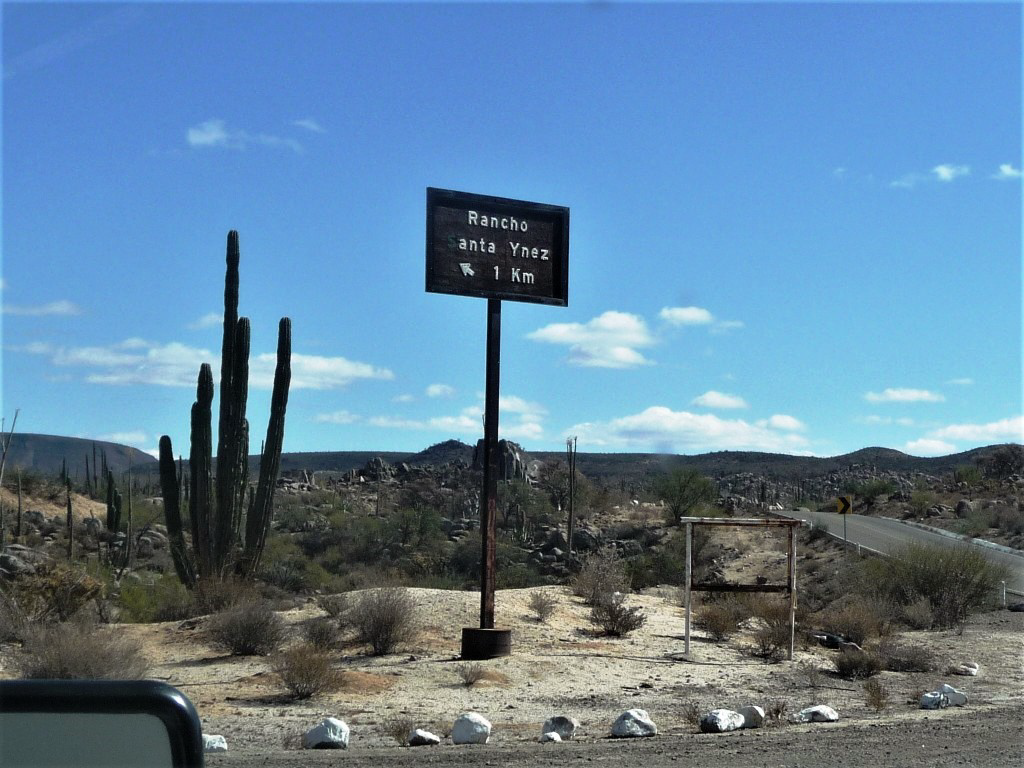
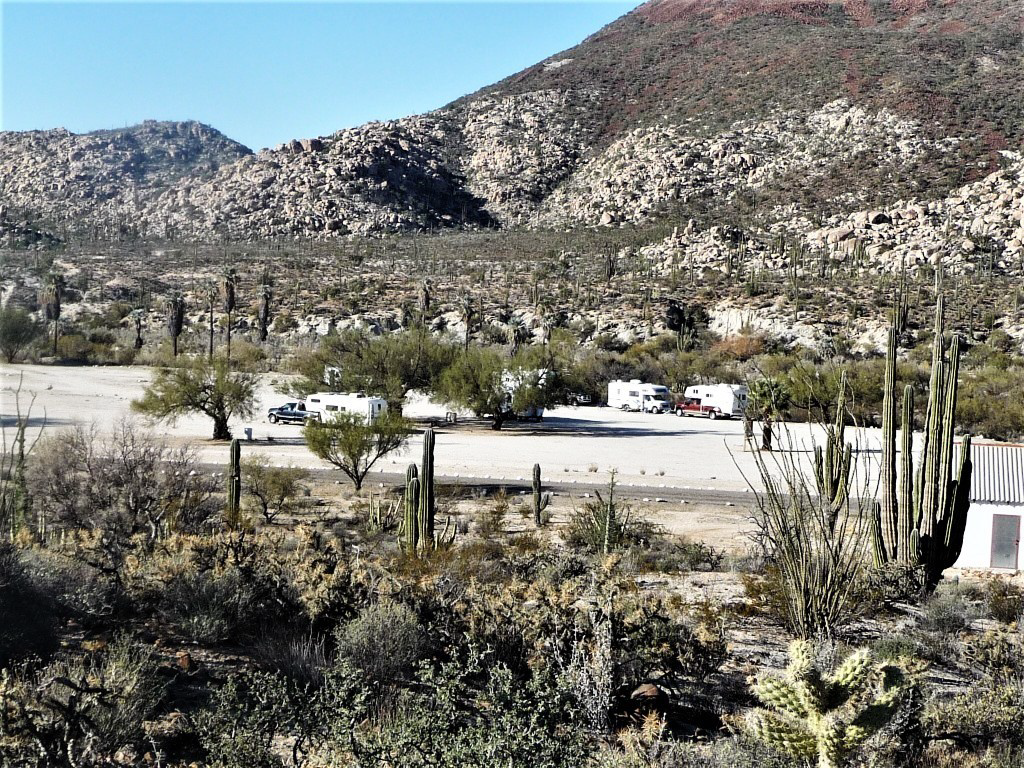
Señora Josefina Zuñiga Ramos
While the original owner of the land was a Señor González, it was Señora Josefina Zuñiga Ramos who developed the rancho. She was born in 1904 to an upper-class family in Sonora, Mexico that had fled to Arizona and Calexico, California during the revolution. At age 17, Josefina moved to San Diego where she went to work in a department store. Speaking good English by this time, she also became the US buyer for the Mexican Army stationed in the northern part of Baja California.
According to an article in the Mexico West Newsletter by Marvin Patchen (September 1989), Josefina was shown home movies of Rancho Santa Inés in 1956 and bought it sight unseen. She also acquired the adjoining land creating a rancho of 854 acres. (Editorial note: Marvin and Aletha Patchen have been long-time Baja explorers who authored Baja Adventures by Land, Sea and Air (1981), and Baja Outpost (2003) which de-scribes their hand-hewn cabin built on the other side of the Santa Inés runway.)
Josefina also helped develop Punta Final, a small, mostly gringo development on the Sea of Cortez. She was a true Baja pioneer and also established a clinic between the rancho and the highway the only medical help for miles around. Patchen reported that the clinic was built by the famous off-road racers Bill Stroppe and Parnelli Jones in her honor. Josefina died in Au-gust, 1989 at the age of 86. Off-roader Brian Chuchua used his helicopter to erect a large cross on the mountain overlooking the rancho, as a tribute to her. Her nephew and other family members still own Rancho Santa Inés, but live in Ramona, Cali-fornia and have others as resident managers. Señor Oscar Valdez Romero and his wife, Matilda de Valdez, have been running Santa Inés for almost 40 years. If you eat at the Cantina, their daughter and granddaughter are often helping out these days.
Cataviña Boulder Fields
Part of Baja’s ancient granite core is visible in the boulder field region around Cataviña. Erosion has carried away soils that were deposited in this region 100 million years ago. Subsequently, the exposed granite surface has weathered and de-composed to produce the odd-looking landscape of the boulder fields. In some instances, entire hills of solid granite have been reduced to boulders, which look as though they were placed in a pile. Some nearby mesas and hills are capped with erosion resistant volcanic material, which protected the underlying material from erosion. In these areas, the underlying granite is not exposed and the flat tops of the mesas and smooth surfaces of the hills bear witness to volcanic ash deposits that occurred after the formation of the underlying granite. Driving through this region of Baja is truly a magical experience.
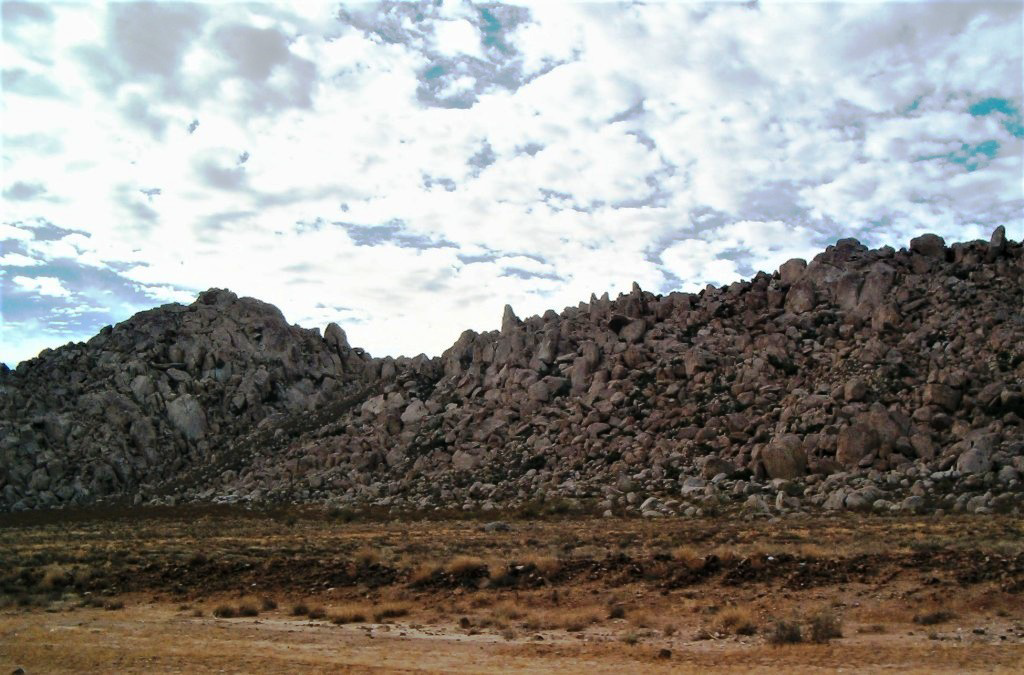
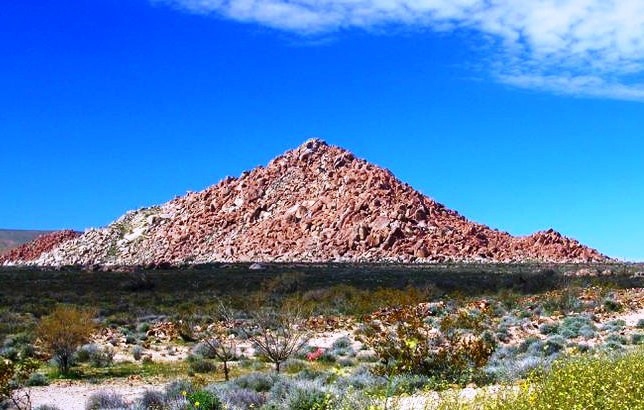
Cerro El Pedregoso
Just north of Cataviña, on the west side of the highway, you will see a very large pile of rocks, Cerro Pedregoso (rocky hill), a Baja landmark for drivers. The base of this granite hill has been covered by volcanic and other debris so only the top stands out, like an iceberg, above the volcanic plain. The granite rocks have been weathered and rounded over millions of years similar to the boulder fields in Cataviña. What you are seeing is only about 15% of this granite monolith.
Cave Paintings
The Cave Paintings and pictographs nearby were created by the indigenous people living here several thousand years ago, predating the dominant Amerindian group of the Central Desert of Baja California in the 18th Century, the Cochimí who disappeared at the beginning of the 19th Century. There are several theories trying to explain these primitive art depictions. Some of the colourful shapes, both geometric and organic in nature, look like human forms. Some appear to symbolize either witchery or perhaps something of religious purpose. Others say the pictographs simply recount important events. The fact is, as with most rock art, the meaning of the Baja paintings remains obscure. Radiocarbon dates have confirmed these petroglyphs are at least 7000 years old. These are always a popular excur-sion for our groups.
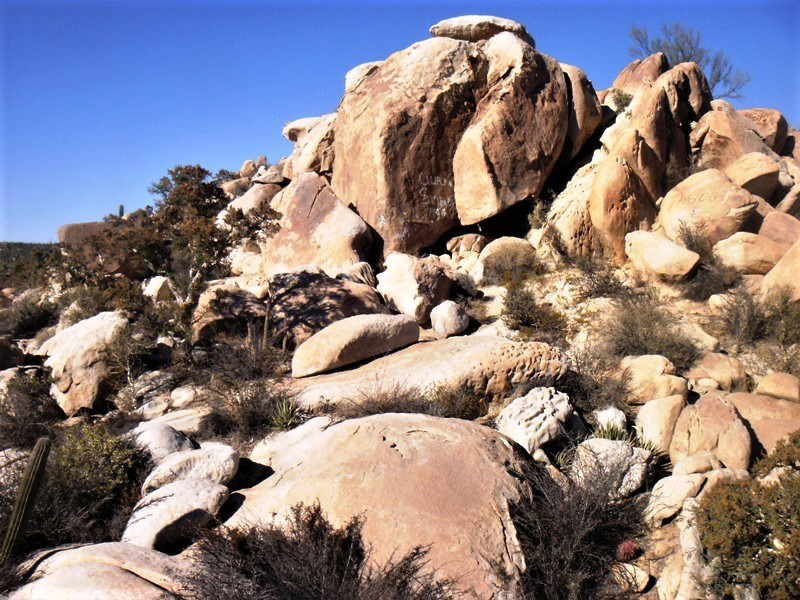
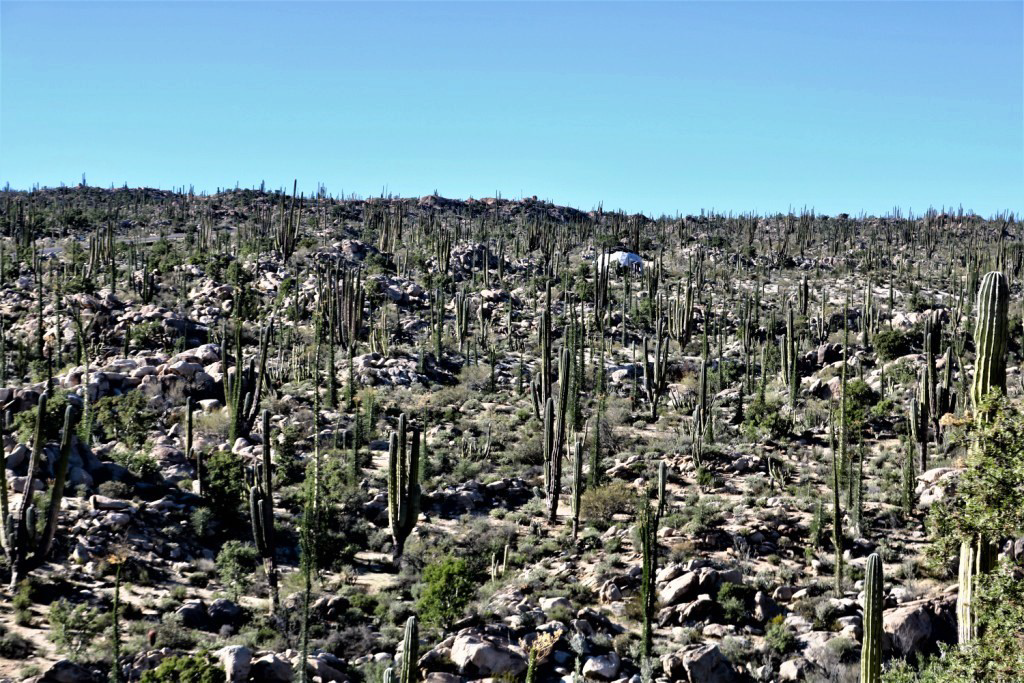
Santa María Ruins
The ruins of Santa María, the last Jesuit Mission (1767), are 14 miles in the mountains behind Rancho Santa Inés. Perceptive Josefina also bought 47 acres surrounding the mission site to help protect and preserve the site. Today, a rugged, poorly maintained road goes to the site. If you are interested in mak-ing this journey, just ask Ralph.
Cirio or Boojum Trees
Another odd-looking tree, the Boojum (Cirio), is endemic to Mexico and exists only in Baja California and in one isolated colony on mainland Mexico, directly across the Gulf from the rest of the boojums. Cochimines called it Milapa and the Mexi-can name for the tree, Cirio, comes from this candle-like ap-pearance. The plant’s English name was given by Godfrey Sykes of the Desert Botanical Laboratory in Tucson, Arizona and is taken from Lewis Carroll’s poem “The Hunting of the Snark”.
The plants occupy the rocky hills and plains, growing as high as 50 feet or more, with a base diameter up to 18 inches. The Boojums start as a single stem, looking much like an inverted carrot, and usually split into two or more stems as they mature.
These split trees often take on strange and twisted shapes, sometimes arching back to the ground, presenting irresistible subjects for the photographer. The trees can live up to 300 years and the gray-white stems leaf out with green, rounded leaves after rain. In late summer, the trees produce a yellow flower cluster at the tip of the stems.
Boojums also are found on the island Angel de la Guarda, which lies in the Sea of Cortez, offshore and north of the Bahía de los Ángeles. A much smaller population of Boojums also grow in the Sierra Bacha, on the mainland, directly across the Sea of Cortez from Isla Angel de la Guarda. For those curious about the plant, but unwilling to travel to Baja, several specimen trees can be found at the Arizona Sonora Desert Museum, in Tucson, Arizona, as well as at the Boyce Thompson Arbore-tum east of Phoenix.
Now fully protected by the Mexican government, boojums are only available in the US if they’ve been nursery-grown. Although their selling price can be nearly $1000 per foot, in light of the recent interest, Tucson native plant nurseries have reported an increased interest in seedlings.
Cardon Cactus
“Cardo” means “thistle” in Spanish. It is said that when Hernán Cortés attempted to establish a settlement in Baja, in 1535, the many spiny cacti earned it the name “Isla de Cardón” because, at the time, they believed the peninsula was an island. In Latin, “pachy” means thick and “cereus” means waxy. One has only to see the thick arms of this pale gray-green, wax skinned cactus to understand what the traveling American botanist, Cyrus Pringle, meant when he named the species. There are about 1200 species of cactus, all of them native to the Americas. Many first-time visitors to Baja mistake this giant cactus for the ecologically similar saguaro cactus (Carnegiea gigantea), another inhabitant of the Sonoran Desert. However, the saguaro does not live in Baja and, while there are a few stands of cardón found across the Gulf of California on the Mexican mainland, they sel-dom occur near the saguaro.
The giant cardon cactus (Pachycereus pringlei) is the emblem of the Baja California peninsula. It is a majestic plant, widely distributed over the entire peninsula and often occurring in dense stands. It is difficult to visit Baja California without being exposed to scenic views framed by this tree-shaped cactus. Be-cause the peninsula is sparsely populated, and many of its are-as are remote and difficult to access, most populations of cardon have remained intact through five centuries of European settlement. The first description (1768) of cardon was by the founder of Misión San Javier, the Jesuit priest, Miguel del Barco, near the town of Loreto.
The cardon cacti can be massive with an average mature car-don reaching a height of ten meters, with individuals as tall as 18 meters (60’). It is a slow-growing plant, with a life span measured in hundreds of years, but growth can be significantly enhanced in its initial stages by inoculation with plant growth-promoting bacteria such as Azospirillum.
Most adult cardon have several side branches that may be as massive as the trunk and the resulting tree may attain a weight of 25 tons. Adult cardon is well adapted to the harsh climate of Baja California, characterized by drought and high temperatures, but as a seedling and juvenile, it depends for survival on nurse plants, such as mesquite (Prosopis articulata). In alluvial soils in southern Baja California, the cardons, and other cacti, occupy an extensive area.
Dan and Lisa Goy own and operate Baja Amigos RV Caravan Tours and have been camping and touring in Mexico since 1985. http://www.bajaamigos.net
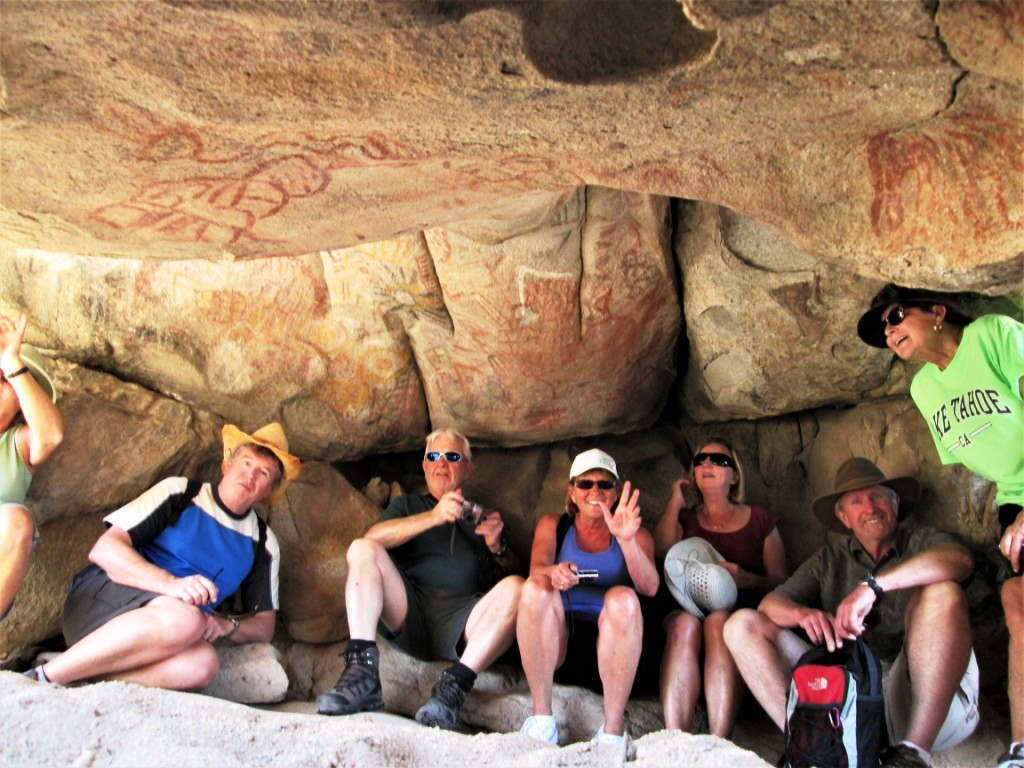
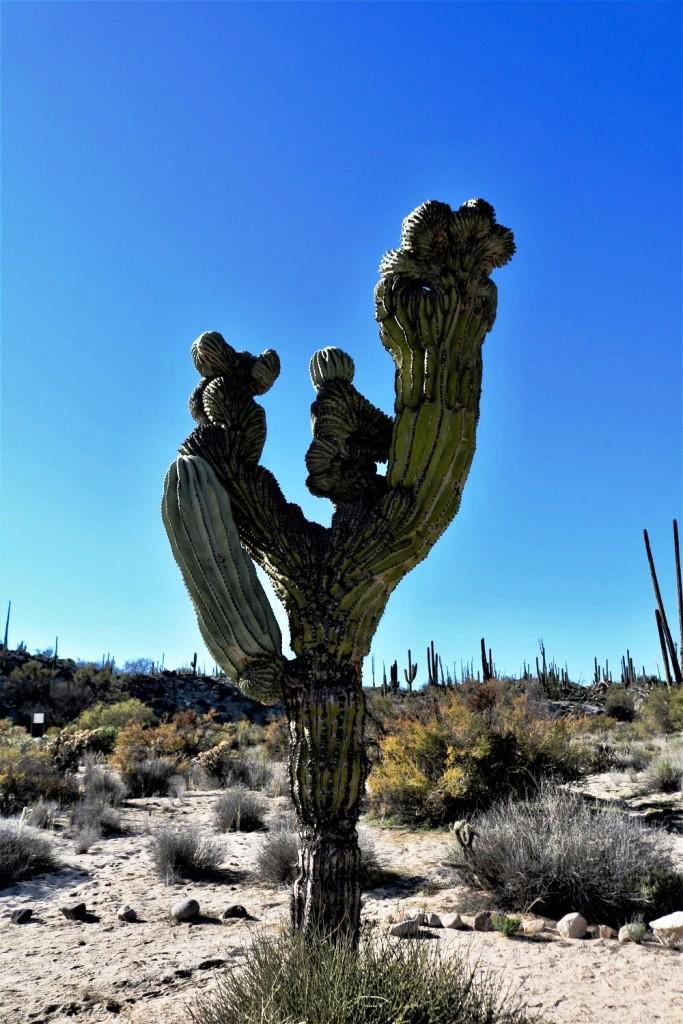
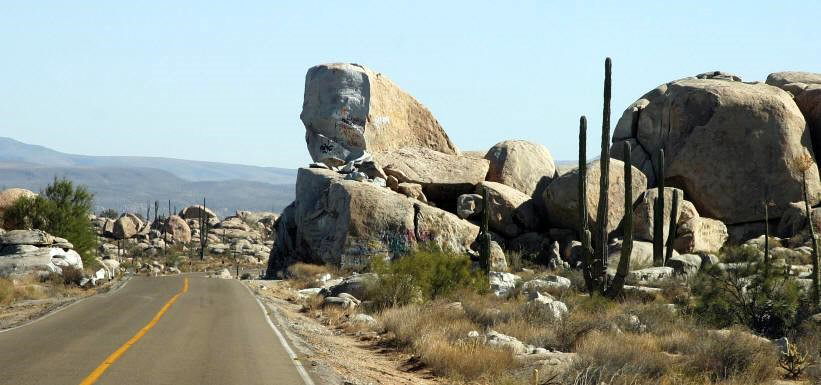
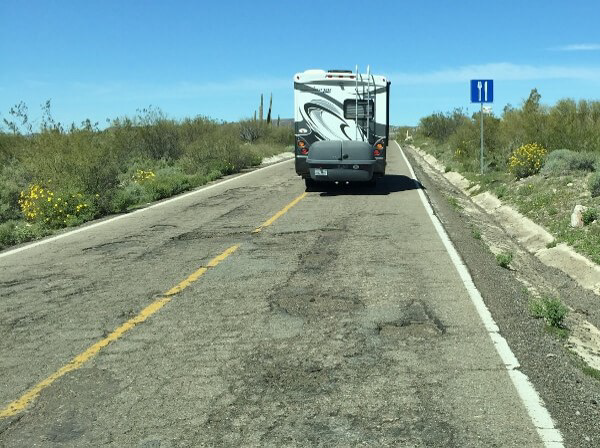
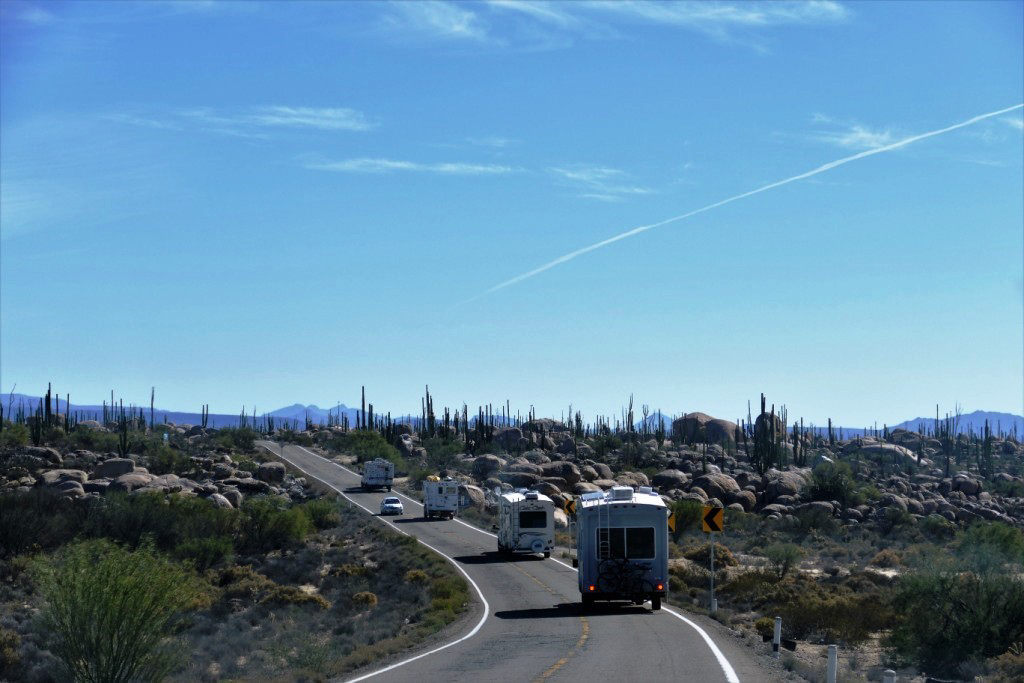
The full edition or view it online
Dan and Lisa Goy, owners of Baja Amigos RV Caravan Tours, have been making Mexico their second home for more than 30 years and love to introduce Mexico to newcomers.

